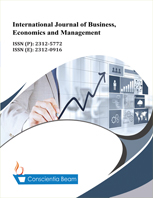German Exports, Economic Growth and Foreign Demand: An Analysis of the Period 2000–2017
DOI:
https://doi.org/10.18488/journal.62.2019.66.335.354Abstract
Taken as a model of economic success expressed as a position of leadership achieved in an environment of economic integration, Germany has shown a growth based to a large extent on its exports. In this sense, this study aims to identify to what extent – and if – the exports of goods from Germany are conditioned by foreign demand between 2000 and 2017. According to the applied methodology, using an Autoregressive Distributed Lag (ARDL) model and the bounds test for cointegration, the estimated coefficients indicate, for both short and long run, an elastic behavior of German exports relative to the external demand changes. Additionally, in the same period, the results corroborated the positive hypothesis of a long-term relationship between the variables. However, although the statistics and historical analysis point to the weakness of a growth model that relies heavily on exports as a fundamental source of demand, the discussion raised forces reflection on the institutional characteristics that may actually contribute to a better understanding of the aspects that define the evolution of recent German economic history.

